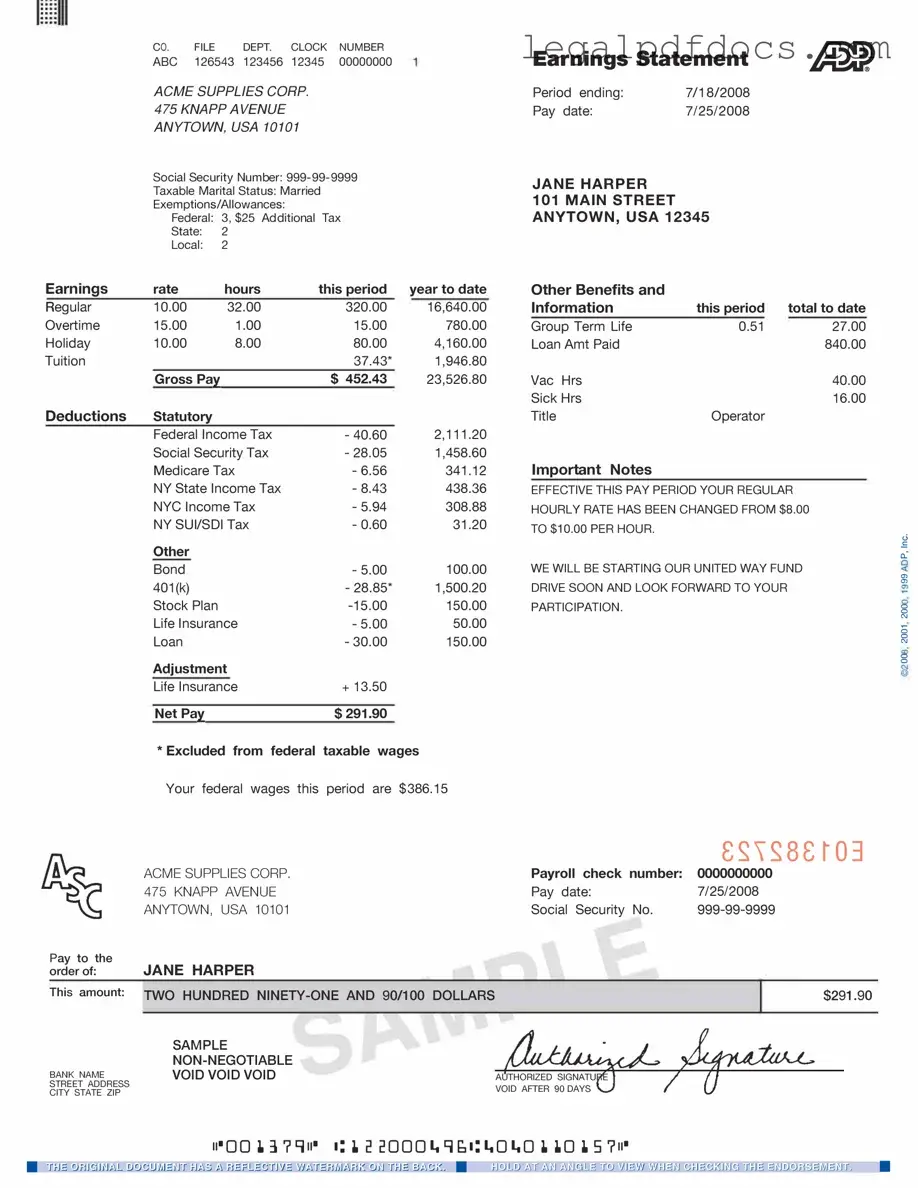Fill Out a Valid Adp Pay Stub Template
The ADP Pay Stub form is a crucial document that provides employees with a detailed breakdown of their earnings and deductions for each pay period. It serves as a transparent record of wages, taxes withheld, and other deductions, ensuring that employees have a clear understanding of their compensation. For those ready to manage their payroll information effectively, consider filling out the form by clicking the button below.
Open Adp Pay Stub Editor Here
